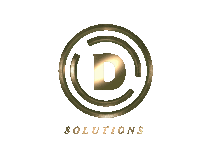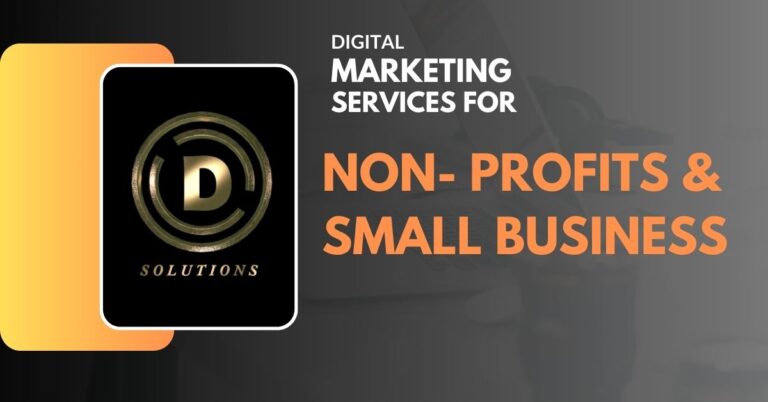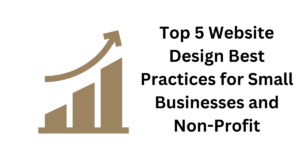Have you ever wondered how digital marketing for small businesses and non-profits can transform your growth? Digital marketing is an essential tool that helps small businesses and NGOs enhance brand awareness, attract supporters, and increase conversions. But before we dive into the services offered by digital marketing agencies, let’s explore the scope and benefits of digital marketing.
Digital marketing encompasses all marketing efforts that promote your brand or products using electronic devices. It is about strategically sending across the right messages to the right person via the right media
What is digital marketing?
In simple terms, digital marketing uses digital technology to achieve business and marketing goals. It allows organizations to send the right messages to the right audience through various online platforms. Whether you run a small business or a non-profit, digital marketing increases visibility and engagement.
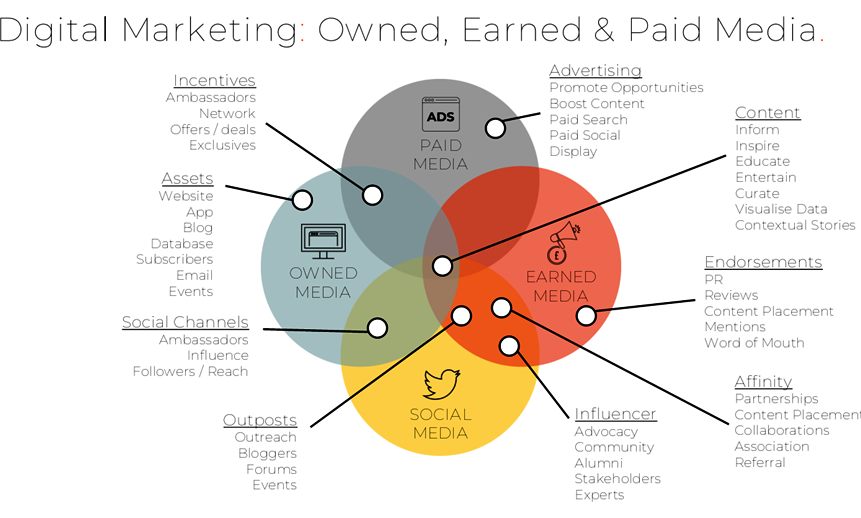
Why Digital Marketing for Small Businesses and Non-Profits Matters
For small businesses and NGOs, digital marketing levels the playing field. It enables them to compete with larger organizations. Unlike traditional marketing, digital strategies are cost-effective and drive results. Here are some key benefits:
Cost-effective advertising
Global audience reach
Higher engagement through social media
Better conversion rates
Data-driven decisions with analytics
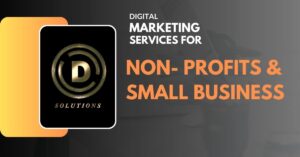
Key Strategies in Digital Marketing for Small Businesses and Non-Profits
1. Content Marketing
The internet simply navigates content, words, text, opinions, images, and videos. Content marketing creates valuable content to attract and retain customers. Blog posts, infographics, and social media updates build brand credibility. They also educate the audience about products and services. Content marketing is an opportunity for organizations to create the type of content that people want. It can be seen as a strategic way to create content to build brands and educate customers on the benefits of products and services. Content marketing drives valuable search traffic and email and social media engagement to increase the number of valuable actions taken by your target audience. It is very important to create content that aims at building relationships with your customers, in other words, to acquire, retain, and develop potential leads into better customers.
2. Search Engine Optimization (SEO)
SEO optimizes website content to rank higher on search engines. A strong SEO strategy ensures small businesses and NGOs appear in front of the right audience when they search for relevant topics.
Search Engine Optimisation, SEO, optimize your page making it relevant by placing it among top Google search results. In other words, it involves optimizing website content and other technical aspects of your website to rank higher in organic search engine results of major search engines. A good SEO strategy requires a combination of technical expertise, creative content creation, and effective promotion strategies. SEO is of two types; On-page optimization (which involves optimizing the content and structure of your website to make it more accessible to search engines) and Off-page optimization (which refers to optimizing the external factors that affect your website’s search engine ranking). Read more: Search Engine Journal
How SEO Helps Digital Marketing for Small Businesses and Non-Profits
SEO is the backbone of digital marketing. Optimized website content, relevant keywords, and technical improvements help organizations rank higher on search engines. Best practices include:
Using relevant keywords like “digital marketing for small businesses and non-profits”
Creating high-quality, informative content
Optimizing meta descriptions and images
Ensuring mobile-friendliness
Building high-quality backlinks
3. Search Engine Marketing (SEM)
SEM, also known as Pay-Per-Click (PPC) advertising, allows organizations to run targeted ads. This method ensures immediate visibility and generates leads quickly.
Google is the highest-quality and largest traffic source in the world. Search Engine Marketing (SEM) generally refers to Paid Search Marketing, a method by which companies pay Google to display their advertisements in search engine results pages (SERPs). These days, paid search advertising is nearly always used. SEM is also alternately referred to as paid search or Pay-per-Click (PPC).
SEO where web content earns a free spot in the search engine results, SEM is the act of buying search engine traffic or running commercial ads in Google. SEM should be a fundamental part of all online marketing strategies for remarketing purposes and ‘cold traffic’.
4. Social Media Marketing (SMM)
Social media marketing, sometimes referred to as digital marketing or e-marketing, is the process of using social media outlets that is where people create social networks and exchange information—to enhance a business’s online visibility, boost sales, and improve website traffic.
Social media platforms like Facebook, Instagram, and LinkedIn help promote digital marketing for small businesses and non-profits. These platforms enable organizations to engage with their audience, run paid ads, and drive traffic.
SMM has built-in data analytics capabilities that enable marketers to monitor the effectiveness of their campaigns and find new opportunities for engagement, in addition to giving businesses a means to interact with their current clientele and attract new ones. Social media marketing has revolutionized how companies can impact customer behavior, from promoting content that encourages interaction to gathering personal information that helps messaging connect with users.
The ubiquity of social media in today’s world makes social media marketing strategies crucial for companies. Social media marketing is frequently more affordable and has greater exposure; however, it needs constant upkeep and may result in unanticipated negative feedback.
Leveraging Social Media in Digital Marketing for Small Businesses and Non-Profits
Social media plays a major role in increasing visibility. Organizations should:
Post consistently with engaging content
Interact with followers through comments and messages
Use paid advertising to reach target audiences
Collaborate with influencers and brand advocates
5. UX/User Journey
A smooth user journey improves conversion rates. Optimizing UX ensures visitors navigate websites easily and take desired actions, such as making a purchase or donating.
A user’s journey is the route someone might follow on a specific website to accomplish their purpose. When creating a website, user journeys are utilized to determine the many approaches that will help the user reach their objective as quickly and easily as possible.
User journeys are the sequential steps a user takes to accomplish a goal. Several web pages and decision points that lead the user from one step to the next will frequently make up this journey. The present path that a typical user would take to accomplish their goal is mapped out using the user journey. After that, this trip is altered to create the “perfect” user experience that is devoid of annoyance. Typically, the output is a flow diagram that shows each page and decision point throughout the entire process.
6. Affiliate Marketing
Affiliate marketing allows organizations to earn revenue through partnerships. By promoting third-party products and services, they can gain credibility while generating income.
In summary, affiliate marketing lets you make money from your posts, blog or website by promoting the goods and services of other businesses through affiliate links that are located on it. The company pays you a modest commission when someone purchases a good or service thanks to your recommendation.
Upon enrolling in an affiliate program, you will typically obtain a unique link including a tracking ID from the network or merchant that powers the program.
This special affiliate link lets the store know when you have sent customers their way when it is linked to their goods and services on your website.
The moment a user opens the link, a cookie is downloaded to their device or computer. Even if a customer doesn’t buy anything right away, you as the affiliate can still be able to get paid (sometimes in the form of a referral bonus) for the traffic you brought in because this cookie typically tracks the user’s actions on the website for a while.
7. Native Advertising / Sponsored Content
This type of marketing blends seamlessly into digital content, ensuring a non-disruptive experience. Sponsored content, such as paid articles or videos, helps reach new audiences effectively.
Native advertising is a type of advertising where the ad units blend in with the context and content of their surroundings. Email ads, social media posts, website content, and search engine ads are examples of native advertising. Their seamless integration into the page they’re on makes for less distracting and more captivating user experiences. An advertisement on a publisher’s website that pays for an article or video is known as sponsored content. Sponsored posts take on the form of the context and surrounding content, just like native ads. Sponsored content is therefore frequently regarded as a type of native advertising.
8. Email Marketing
Email marketing remains one of the most effective digital strategies. Sending personalized newsletters and promotions helps businesses and NGOs stay connected with their audience.
Email marketing is an effective marketing channel that uses email to advertise the goods and services your company offers. It is a type of digital marketing as well as direct marketing. By including it in your marketing automation campaigns, it can assist in informing your customers about your most recent products or deals. Through various forms of marketing emails, it can also be extremely important for lead generation, brand awareness, relationship building, and maintaining customer engagement in between purchases.
9. Influencer Marketing
Partnering with influencers expands reach and credibility. A well-matched influencer can help businesses and NGOs grow within niche audiences.
Influencers are people with a large social media following who are considered authorities in their field. Influencer marketing is the practice of using these people to place products or endorse brands on social media networks. Influencer marketing can improve campaign performance by expanding your reach within a specific audience or niche and enhancing sales, lead generation, or brand awareness.
10. Inbound Marketing
By establishing deep, enduring connections with clients, prospects, and customers instead of interrupting them with conventional advertising techniques, the inbound methodology is a strategic approach to expanding any business. Three approaches exist for applying the inbound methodology: Create content and engage in conversations that position you as a reliable resource to attract the right people. To increase your chances of getting a sale, engage them by offering ideas and answers that match their objectives and areas of pain. Delight is enabling your customers to succeed with your product by providing them with assistance and support.
11. Marketing Analysis and Data Analysis
Data analysis for marketing encompasses all techniques and operations used by businesses to analyze data about a target audience or market. Effective marketing analysis can improve marketing strategies and raise the likelihood that campaigns will succeed. Businesses that occasionally use marketing data analysis to assess the performance of their current marketing strategies as against historical performance often succeed in the long run. Market analysis and data can be used, for instance, to assess how well the business is doing to increase brand awareness among a particular target market. Effective decision-making regarding public product promotion is made possible by the analysis of marketing data.
12. Marketing Automation
These tools streamline tasks like email campaigns and social media posting. This automation allows organizations to focus on strategy rather than repetitive tasks.
The reasoning or regulations that allow marketing software to replace human-assisted back-end business operations or customer communications is what is known as marketing automation. Small businesses can use automation to implement their strategy without devoting their time or energy. This technology is a great way to generate leads and acquire new customers, but it functions best when there is an established audience and as a nurturing strategy.
Why digital marketing and what are the benefits for small businesses and NGOs?
Digital marketing has several significant advantages, including:
- Digital marketing makes it possible for smaller brands to compete with larger brands and levels the playing field within the niche.
- It is less expensive than methods of outbound marketing.
- Changing and adapting a digital marketing strategy is simpler.
- It helps concentrate efforts on the customers who are most likely to buy your good or service.
- Digital marketing can improve your conversion rate and the quality of your leads.
- Digital marketing allows you to interact with audiences at every level.
- Let’s dive deeper.
Conclusion
Embracing digital marketing for small businesses and non-profits is essential for growth and sustainability. From SEO and content marketing to social media and email campaigns, these strategies help organizations connect with their audience and achieve their goals.
Are you looking for a reliable digital marketing agency to help your small business or NGO thrive online?
At D-solutions, we offer a research-based, affordable fee for our digital marketing services. We take SEO-performant content very seriously. Our services range from building SEO compliance website design – online advertisement – AI-enhanced automation and training. Our main goal is to support and accompany small businesses, Start-ups, and Non-Profits with up-to-date digital tools and marketing strategies to maintain a strong and consistent online presence. We work and consult with our client throughout their entire digital marketing trajectory.
